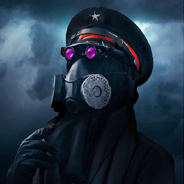Выполните следующие задания: 1.Образуйте форму множественного числа следующих существительных: writer, chemist, astronomer, laboratory, man, founder.
2. Напишите формы вопросительных местоимений, объясните правила их использования в предложении.
3. Образуйте степени сравнения следующих прилагательных и наречий: colorful, bright, innovative, bad, many, large.
4. Прочтите и переведите тексты. Текст «А» переведите письменно и от-ветьте на вопросы после текста.
Text A. M.V. Lomonosov (1711-1765)
Mikhail Vasilyevich Lomonosov was a famous Russian writer, chemist and astronomer who made a lot in literature and science.
Lomonosov was born on November 19, 1711, in Denisovka (now Lomono-sov), near Archangelsk, and studied at the University of the Imperial Academy of Sciences in St. Petersburg. After studying in Germany at the Universities of Mar-burg and Freiberg, Lomonosov returned to St. Petersburg in 1745 to teach chemi-stry and built a teaching and research laboratory there four years later. Lomonosov is often called the founder of Russian science. He was an innovator in many fields. As a scientist he rejected the phlogiston theory of matter commonly accepted at the time and he anticipated the kinetic theory of gases. He regarded heat as a form of motion, suggested the wave theory of light, and stated the idea of conservation of matter. Lomonosov was the first person to record the freezing of mercury and to observe the atmosphere of Venus.
Interested in the development of Russian education, Lomonosov helped to found Moscow State University in 1755, and in the same year he wrote a grammar that reformed the Russian literary language by combining Old Church Slavonic with modern language. In 1760 he published the first history of Russia. He also revived the art of Russian mosaic and built a mosaic and coloured-glass factory. Most of his achievements, however, were unknown outside Russia. He died in St. Petersburg on April 15, 1765.
Questions:
Why Lomonosov is often called the founder of Russian science? What had Lomonosov done in the field of Russian education?
Text B. Metals
Heat treatment controls the nature of the grains and their size in the metal. Small amounts of other metals (less than l per cent) are often added to a pure metal. This is called alloying (легирование) and it changes the grain structure and properties of metals.
All metals can be formed by drawing, rolling, hammering and extrusion, but some require hot-working. Metals are subject to metal fatigue and to creep (the slow increase in length under stress) causing deformation and failure. Both effects are taken into account by engineers when designing, for example, airplanes, gas-turbines, and pressure vessels for high-temperature chemical processes. Metals can be worked using machine-tools.
The ways of working a metal depend on its properties. Many metals can be melted and cast in moulds, but special conditions are required for metals that react with air.
Text C. Nuclear Engineering
This branch of engineering is concerned with the design and construction of nuc-lear reactors. In addition to designing nuclear reactors that yield specified amounts of power, nuclear engineers develop the special materials necessary to withstand the high temperatures and radioactivity. Nuclear engineers also develop methods to shield people from the harmful radiation produced by nuclear reactors.
5. Переведите на русский язык следующие слова: annealing, quenching, tempering, intermediate, to immerse, indicator, treatment, ductile.
6. Переведите на английский язык следующие слова и словосочетания: предвидеть, возрождать, церковно-славянский язык, вредное излучение, де-формация, горячая обработка, размер и форма зерен, прокатка, ковка.
7. Переведите на русский язык предложение, содержащее модальный гла-гол или его эквивалент. The question of the laws of resistances in circuits may now be turned to.
8.Выпишите из текста «C» предложение, содержащее сказуемое в страда-тельном залоге. Переведите предложение на русский язык.
9.Составьте резюме, используя образец в Приложении.
236
359
Ответы на вопрос:
Реши свою проблему, спроси otvet5GPT
-
Быстро
Мгновенный ответ на твой вопрос -
Точно
Бот обладает знаниями во всех сферах -
Бесплатно
Задай вопрос и получи ответ бесплатно

Популярно: Английский язык
-
1 b Work in pairs. Listen and answer the questions. 1 Why does...
 elizavetaelise111.04.2021 17:40
elizavetaelise111.04.2021 17:40 -
Healthy bodies Read and choose the correct words....
 Евгениямагическая12.05.2022 23:34
Евгениямагическая12.05.2022 23:34 -
Выберите правильное написание: 1. clath clothe cloth 2. silke...
 kisilevars200305.01.2022 00:34
kisilevars200305.01.2022 00:34 -
Complete the sentences with the correct form of the verb to be....
 НикаиВикаСестры111004.09.2020 03:13
НикаиВикаСестры111004.09.2020 03:13 -
Закончи предложения. this/these a) 1)look piems? 2)do you poems?...
 MCKOLYA11.06.2022 19:03
MCKOLYA11.06.2022 19:03 -
Task1. вставьте необходимый предлог to, если это необходимо. помни...
 kuleminaIV28.04.2022 12:22
kuleminaIV28.04.2022 12:22 -
Выберите слово, которое наиболее подходит по смыслу. 1. i would...
 Fynerka17.02.2022 07:16
Fynerka17.02.2022 07:16 -
Прочитайте статью и ответьте на во главное блюдо)? __________...
 baskaqusar08.09.2022 20:54
baskaqusar08.09.2022 20:54 -
Упражнение 5. Поставьте глаголы, данные в скобках в нужную форму....
 valityuk07.03.2021 13:12
valityuk07.03.2021 13:12 -
Look read and complete the crossword puzzle....
 Асия2222216.11.2020 10:24
Асия2222216.11.2020 10:24

Есть вопросы?
-
Как otvet5GPT работает?
otvet5GPT использует большую языковую модель вместе с базой данных GPT для обеспечения высококачественных образовательных результатов. otvet5GPT действует как доступный академический ресурс вне класса. -
Сколько это стоит?
Проект находиться на стадии тестирования и все услуги бесплатны. -
Могу ли я использовать otvet5GPT в школе?
Конечно! Нейросеть может помочь вам делать конспекты лекций, придумывать идеи в классе и многое другое! -
В чем отличия от ChatGPT?
otvet5GPT черпает академические источники из собственной базы данных и предназначен специально для студентов. otvet5GPT также адаптируется к вашему стилю письма, предоставляя ряд образовательных инструментов, предназначенных для улучшения обучения.
